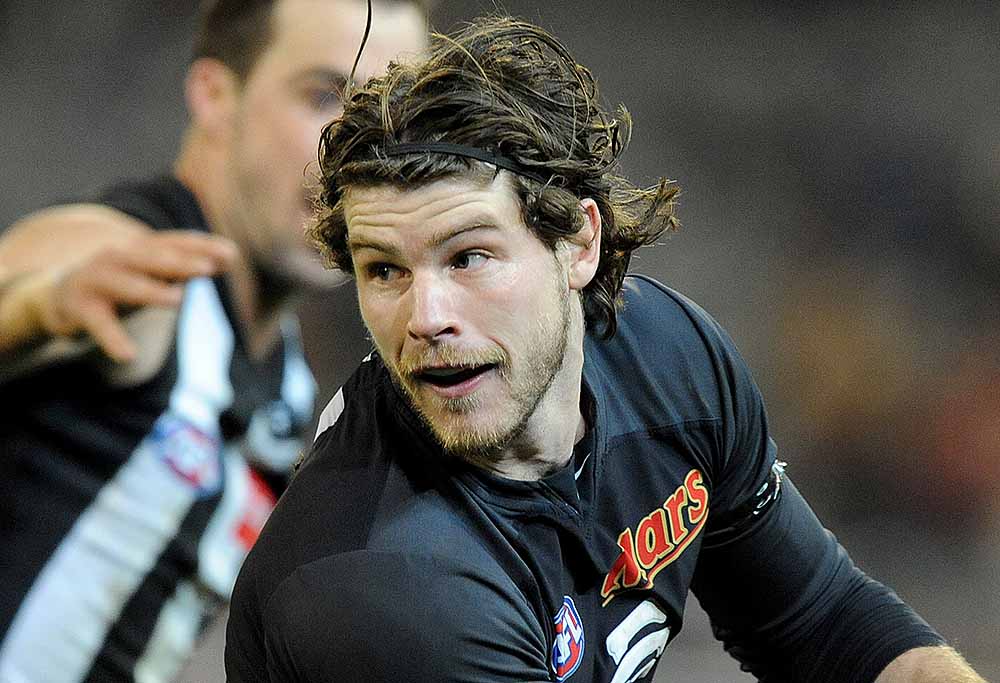After a two-week standoff, it has officially been decided that next year Bryce Gibbs will play in the navy blue rather than the tri-colours.
Both clubs’ fans are now praising them and chastising them alike, for holding their nerve or failing to get a deal done. With such a chasm between the clubs’ opinions of Gibbs’ value, it’s a wonder they didn’t give up the negotiations sooner. Now that we’ve witnessed the fallout, would one team have actually benefitted by caving?
Firstly, some background on Gibbs. Recruited from Glenelg, South Australia, Bryce Gibbs was picked number one in the 2006 draft. The son of a 250-gamer at Glenelg, Adelaide was contentiously denied a Father-Son selection and Gibbs was taken by the Blues.
As the meat in the underwhelming Murphy-Kreuzer draft-sandwich, Gibbs has developed to be the Carlton Faithful’s favourite whipping boy. A good consistent player by all measures, he has been disappointing when compared to other number one picks such as Luke Hodge, Brett Deledio, and Nick Riewoldt.
According to Adelaide’s (salty) press statement, Carlton set the asking price at a two first round picks. This would ultimately have been pick 13 this year and Adelaide’s pick in 2017.
Gibbs was being described as the missing piece in the grand final puzzle, making the Crows’ 2017 pick roughly 17 or 18. Using the Father-Son Draft Value Index, those picks equate to 2,217 points or roughly pick three (a pick higher than Adelaide has ever held).
As the first pick is worth 3,000, the Blues would have received approximately 74 per cent of their original investment, had this deal occurred.
For Gibbs to maintain that kind of value, he would need to have 74 per cent of his output remaining – finishing his career with 801 games, 18,153 disposals, and 264 Brownlow votes. 30 years of match payments alone makes this unappealing.

It’s very rare to see multiple first round picks traded, and when they are it is usually reserved for players that will later be enshrined in the Hall of Fame such as Peter Bell, Wayne Carey, and Shaun Burgoyne.
Gibbs is a good player, make no mistake, but it’s a stretch to consider him a future member of the Hall of Fame. None of these players were without their risks, but all had a far higher ceiling than Gibbs.
Adelaide may have had a point when they said Carlton were being unreasonable. It may not have been a terrible idea for the Crows to give this one a miss, after all, losing access to early round talent can have debilitating effects on a club, as showcased by Carlton in the early 2000s and Hawthorn in about five years’ time.
Alternatively, Adelaide was willing to pay Carlton pick No.13, a 2017 third round pick. Continuing the assumption that Gibbs would take them to the promised land, Adelaide’s future pick would likely be 53-54. Under the FSDV Index, these picks aggregate to 1,751 points, or approximately pick No.6.
This is just over half of their originally invested pick and suggests he will produce another 282 games, 6,401 disposals and, 93 Brownlow votes – uncommon expectations for a 28-year old. However if the scarcely injured Gibbs can play until he’s 40, akin to that of Boomer Harvey, this might just be a realistic value.
Stephen Silvagni was seeking top dollar for the former John Nicholls Medallist. Coming off a near career best year and with three years to play on a contract, Gibbs’ value was likely at an all-time high for the Blues. That said, it is unconventional to turn down a deal that only looks bad if Gibbs becomes a statistical anomaly – particularly when building a team through the draft and the GWS NEAFL team.
But after watching a pantheon of former Blues flourish at West Lakes, you can hardly blame SOS for not wanting to see it happen again.
Obviously this analysis only considers Gibbs’ personal output and ignores a number of other important factors – his on-field leadership, his ageing body, and his merchandising value, for example.
What it does show is that Carlton’s initial price was drastically high, and Adelaide’s offer was not bad. Both teams dug their heels in and neither walked away having made a deal they would regret.
Ultimately, having fallen in and out of love more times than the members of Fleetwood Mac, the clubs decided to go their own way, and that may have been the best result for them both.































































































